Carrying babies on the plane has always been a challenge to parents, especially in the 1950s when seat belts were still not appearing.
As a result, parents had to use some distinctive ways to keep their children safe during the flight.
How Did Babies Travel On Planes In The 1950s?
In the 1950s, air travel was still a relatively new concept, and safety regulations were not as strict as they are today.
Parents were not required to purchase a separate seat for their child, and there were no private areas for changing diapers or feeding infants.
Instead, babies were simply placed in overhead cradles, also known as "skycots" during the flight.
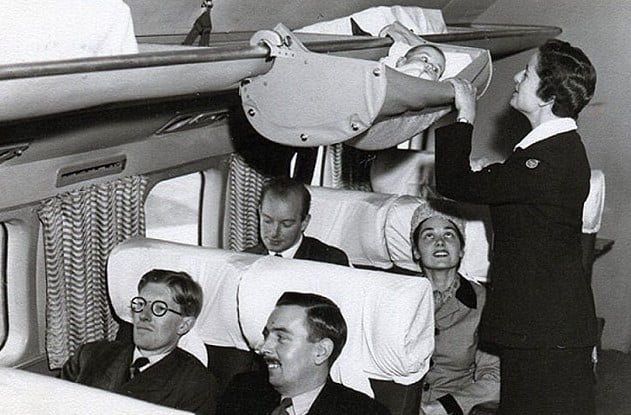
The Born Of Skycots And How Airlines Used Them In The 1950s
The British Overseas Airways Corporation, or BOAC, which was the predecessor of British Airways, created a perfect solution to keep infants secure when traveling on aircraft in 1953.
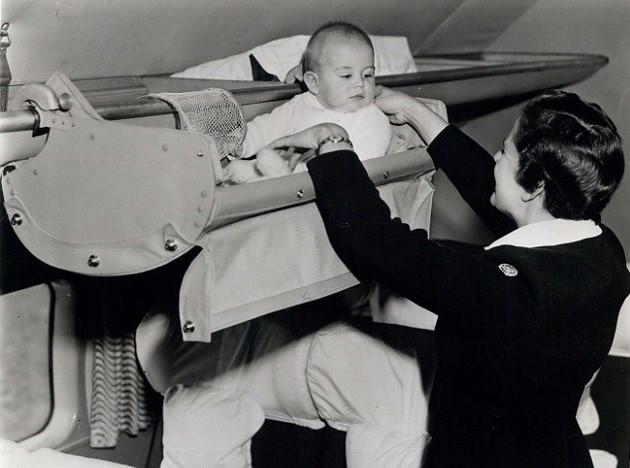
When flying long distances, a "skycot" is similar to a hammock for babies. To help them sleep comfortably, these skycots were essentially small bassinets that were attached to the overhead luggage bins.
Nevertheless, the parent had to carry the youngster throughout takeoff and landing; this is still the custom today.
Skycots were made of wicker or metal frames and lined with soft padding to keep the baby comfortable. The cradle was then secured to the bin using straps or hooks, ensuring that it would not fall during turbulence or sudden movements.
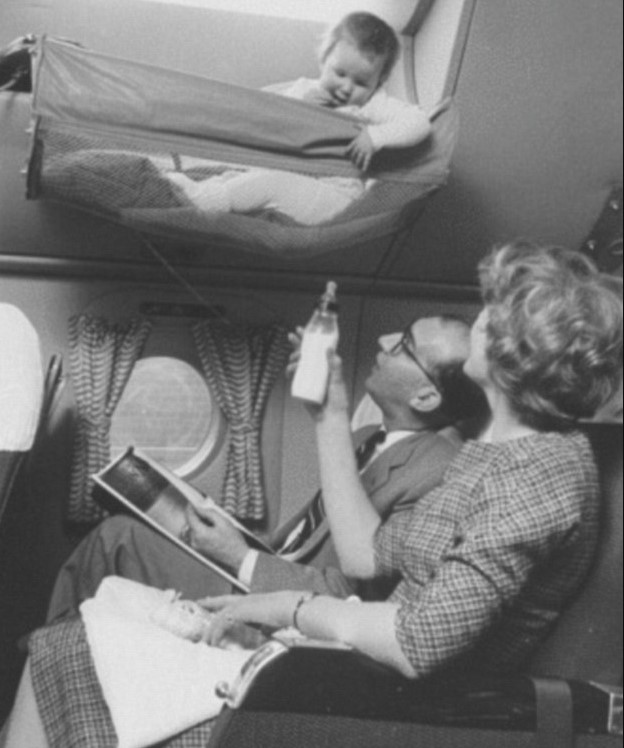
While this may seem like a precarious way to transport a baby, it was a common method in the 1950s and was considered safe at the time.
The Evolution Of Skycots
The use of skycots dates back to the early days of commercial aviation in the 1920s. However, they were not commonly used until the 1950s when air travel became more popular.
In the early days, skycots were just simple stuff to keep baby in their spot safely. They were often homemade and not very sturdy, leading to some safety concerns.
As air travel became more popular, airlines began to invest in better-quality skycots.
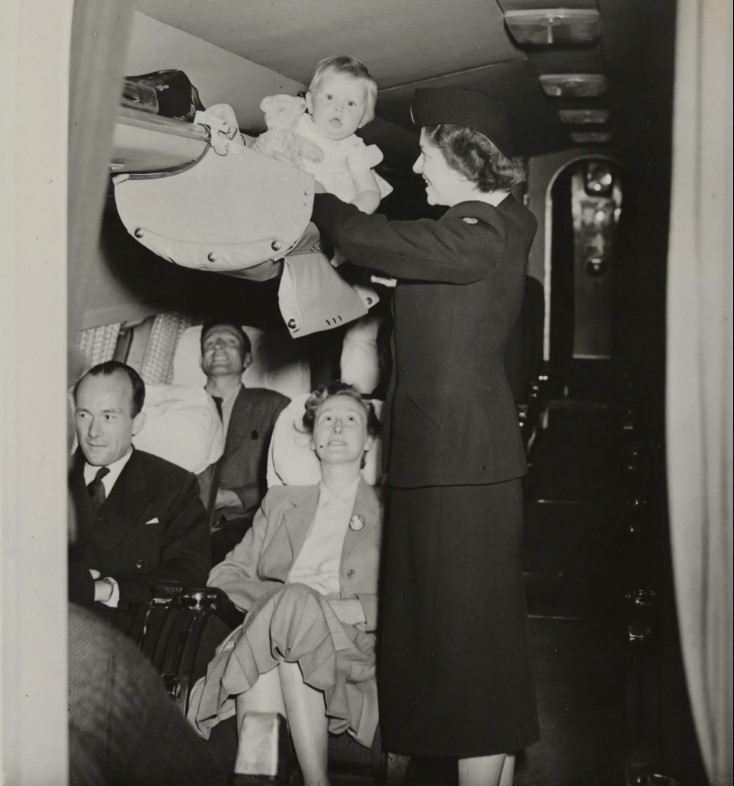
By the 1950s, most major airlines had their version of the overhead cradle, with some even offering a "baby service" for an additional fee, including diapers, formula, and other essentials for the baby during the flight.
Some airlines also had specially trained "air nannies" who would assist parents with their children during the journey.
What Benefits Of Skycots In The 1950s?
While skycots may seem like a strange concept to us now, they were a convenient way for parents to travel with their babies in the 1950s.
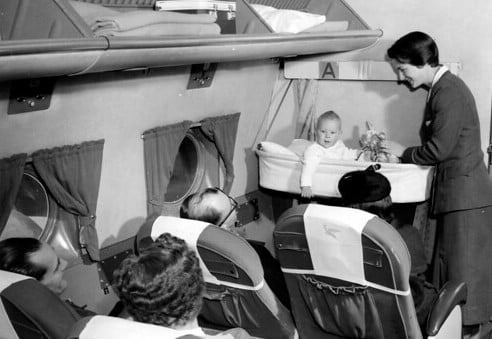
Unlike today, where parents are required to purchase a separate seat for their child, skycots allowed infants to travel for free.
This was a huge advantage for families who could not afford to purchase an extra ticket.
Placing babies in overhead cradles also allowed parents to have their hands free during the flight.






